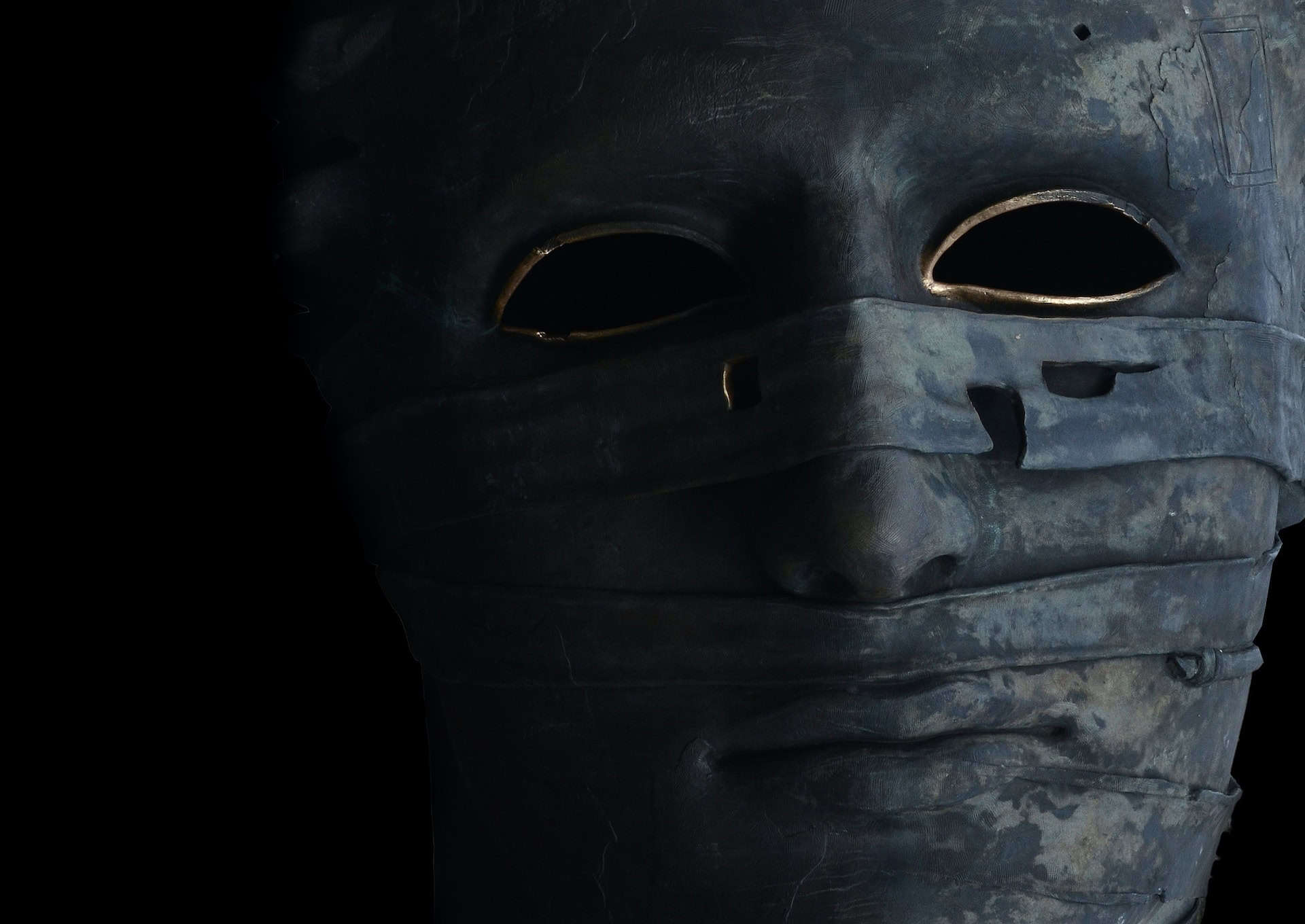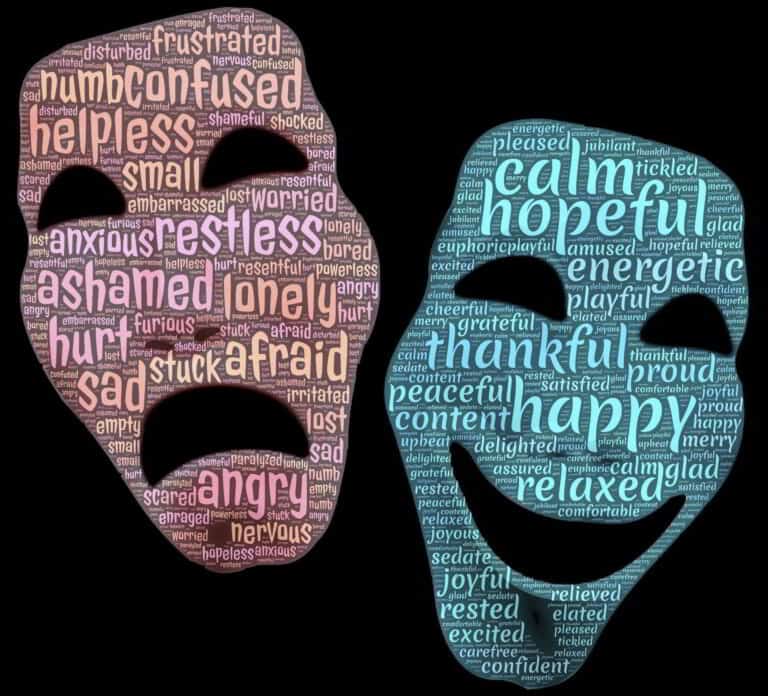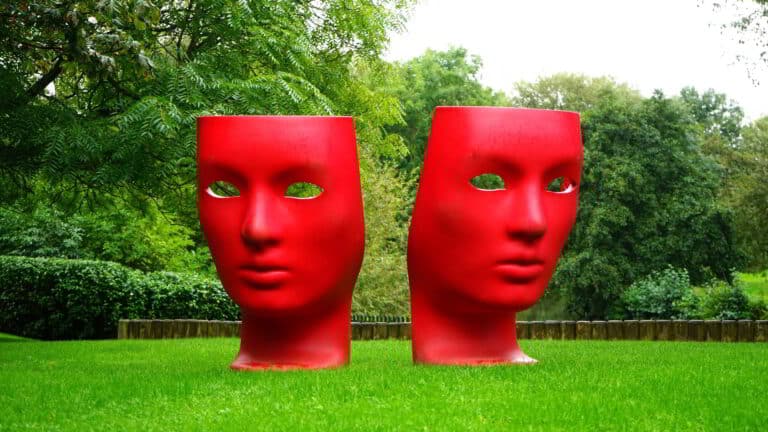Unlocking the Power of Jungian Archetypes in Literature and Life
Dive into the fascinating world of Jungian archetypes and learn how these universal symbols shape our lives, literature, and dreams. Discover the 12 primary archetypes and how they influence storytelling and personal growth.
Introduction: Exploring the World of Jungian Archetypes
We all encounter recurring characters, themes, and symbols in the stories we read, the movies we watch, and even the dreams we have. These universal patterns, called Jungian archetypes, originate from the collective unconscious and profoundly influence our lives and creative expressions. In this article, we’ll delve into the 12 primary Jungian archetypes, their characteristics, and their impact on literature and personal growth. By understanding these archetypes, you’ll be better equipped to interpret the world around you and even use them as a powerful tool in your own storytelling and self-discovery.
“Who looks outside, dreams; who looks inside, awakes.” – Carl Jung
The Collective Unconscious: The Birthplace of Archetypes
Swiss psychiatrist Carl Jung proposed the concept of the collective unconscious, a deep reservoir of inherited psychological patterns shared by all humans. He believed that this unconscious layer contained archetypes – universal, archaic symbols and themes that surface in literature, art, and dreams. These archetypes are not just abstract concepts; they are active forces within our psyche, shaping our thoughts, emotions, and actions.
“The archetype is a tendency to form such representations of a motif—representations that can vary a great deal in detail without losing their basic pattern.” – Carl Jung
Jung’s theory suggests that by tapping into these archetypes, we can access a powerful source of inspiration and understanding, both in storytelling and personal growth. So, let’s explore the 12 primary Jungian archetypes and their significance in our lives.
The 12 Primary Jungian Archetypes: A Brief Overview
 The Innocent
The Innocent
Characteristics: Naïve, optimistic, seeks happiness Theme Moment: When the Innocent encounters challenges or corruption, they must learn to adapt and grow without losing their purity and faith in goodness.
The Innocent represents our desire for a simple, happy life free from suffering and conflict. In literature, the Innocent often faces a loss of innocence, prompting them to confront the harsh realities of the world while maintaining their core values.
The Orphan/Regular Guy or Gal
Characteristics: Desires to belong, down-to-earth Theme Moment: The Orphan’s journey often involves finding their true identity and a sense of belonging in a community or family.
The Orphan archetype embodies our need to connect with others and feel accepted. They are relatable characters, often struggling with feelings of abandonment or alienation. Through their experiences, the Orphan learns the importance of trust, loyalty, and finding a place where they truly belong.
The Hero

Characteristics: Brave, seeks to prove worth through courageous acts Theme Moment: The Hero’s journey is marked by trials and tribulations, ultimately leading to personal growth and the realization of their true potential.
The Hero archetype represents our innate desire to overcome obstacles and achieve greatness. They are courageous, determined, and often face great adversity. Through their trials, the Hero learns the importance of sacrifice, selflessness, and the power of their own inner strength.
“A hero is someone who has given his or her life to something bigger than oneself.” – Joseph Campbell
The Caregiver
Characteristics: Altruistic, desires to help others Theme Moment: The Caregiver must learn to balance their selflessness with self-care, understanding that they too deserve love and nurturing.
The Caregiver archetype embodies our instinct to nurture and protect others. They are often selfless individuals who prioritize the well-being of others above their own. However, the Caregiver’s journey often involves learning to care for themselves and understanding that self-sacrifice should not lead to self-depletion.
The Explorer

Characteristics: Seeks out and enjoys new experiences Theme Moment: The Explorer must learn to navigate the unknown, embracing the journey’s lessons, and not just the destination.
The Explorer archetype represents our innate curiosity and desire for adventure. They are always seeking new experiences, driven by the thrill of discovery and the pursuit of freedom. The Explorer’s story often revolves around their journey into the unknown, learning to value the process and not just the outcome.
The Rebel
Characteristics: Desires revolutionary change, challenges authority Theme Moment: The Rebel’s journey often involves creating meaningful change while grappling with the consequences of their defiance.
The Rebel archetype embodies our desire to challenge the status quo and instigate change. They are often seen as disruptive, challenging authority, and traditional norms. Through their rebellion, they learn the power of their voice and the cost of their actions, often bringing about transformational change.
The Lover

Characteristics: Passionate, seeks intimate relationships Theme Moment: The Lover’s journey often involves understanding that love encompasses more than passion—it involves respect, understanding, and compromise.
The Lover archetype represents our longing for intimacy and meaningful relationships. They are often driven by passion, desiring deep emotional connections with others. Through their experiences, the Lover learns that love is multifaceted, requiring patience, understanding, and compromise.
The Creator
Characteristics: Imaginative, desires to create things of enduring value Theme Moment: The Creator’s journey often involves overcoming self-doubt and external challenges to bring their vision to life.
The Creator archetype embodies our desire to manifest our ideas into reality. They are often imaginative and innovative, aspiring to create something of enduring value. The Creator’s journey often involves overcoming obstacles, both internal and external, to realize their creative vision.
The Jester
Characteristics: Loves life, uses humor to navigate through life Theme Moment: The Jester’s journey often involves learning when humor is appropriate and when it’s time to be serious.
The Jester archetype represents our desire to enjoy life and not take things too seriously. They often use humor as a coping mechanism, helping others see the lighter side of life. However, the Jester also learns that there’s a time for fun and a time for seriousness, understanding the delicate balance between the two.
The Sage

Characteristics: Values knowledge, seeks truth Theme Moment: The Sage’s journey often involves sharing their wisdom with others and learning that true wisdom includes understanding and empathy.
The Sage archetype embodies our pursuit of knowledge and truth. They are often seen as wise and insightful, striving to understand the world around them. The Sage’s journey often involves sharing their wisdom with others, understanding that true wisdom goes beyond knowledge—it encompasses understanding, compassion, and empathy.
“Wisdom is not a product of schooling but of the lifelong attempt to acquire it.” – Albert Einstein
The Magician
Characteristics: Visionary, seeks to make dreams come true Theme Moment: The Magician’s journey often involves understanding that real magic involves hard work and dedication.
The Magician archetype represents our desire to transform our dreams into reality. They are often visionary individuals, believing in their ability to bring about change. The Magician’s journey often involves realizing that ‘magic’ is not just about wishful thinking—it requires dedication, hard work, and a belief in oneself.
The Ruler

Characteristics: Seeks control, appreciates order Theme Moment: The Ruler’s journey often involves learning to balance authority with empathy, understanding that true leadership requires compassion and respect for others.
The Ruler archetype embodies our desire for control and order. They are often seen as leaders, striving for stability and influence. The Ruler’s journey often involves learning to balance their authority with empathy, understanding that effective leadership involves respect, fairness, and the ability to inspire others.
Conclusion: The Power of Jungian Archetypes in Our Lives
Understanding Jungian archetypes can serve as a powerful tool in interpreting the world around us and navigating our personal journeys. These universal symbols and themes provide a common language, helping us understand the underlying patterns that drive our behaviors, our stories, and our dreams. By recognizing these archetypes within ourselves and others, we can gain a deeper understanding of human nature, empowering us to lead more fulfilling lives and create more compelling narratives.
So next time you read a book, watch a movie, or even reflect on your own experiences, look for these archetypes. You might be surprised at what you discover about the story—and about yourself.
FAQs
What are Jungian Archetypes?
Answer: Jungian archetypes are universal, archaic symbols and themes derived from the collective unconscious. They are psychological patterns inherited by all humans, proposed by Swiss psychiatrist Carl Jung. These archetypes surface in literature, art, and dreams, influencing our behaviors, thoughts, and emotions.
How can understanding Jungian Archetypes benefit me?
Answer: Understanding Jungian archetypes can provide insights into human behavior, motivations, and desires. It can also enhance your interpretation of literature, art, and even personal experiences, helping you better understand yourself and others.
Can Jungian Archetypes change or evolve over time?
Answer: While the core characteristics of Jungian archetypes remain constant, their expression can vary across different cultures and time periods. They can also evolve within an individual as they grow and navigate different life experiences.
What is the significance of Jungian archetypes in literature?
Answer: Jungian archetypes serve as foundational character models in literature. They represent universal patterns and instincts that readers can instantly recognize, creating a deeper connection between the story and the audience.
How can a writer utilize Jungian archetypes in their work?
Answer: Writers can use Jungian archetypes to develop robust, relatable characters. These archetypes can provide a framework for a character’s motivations, behavior, and development throughout the story.
Can a character embody more than one Jungian archetype?
Answer: Yes, a character can embody multiple Jungian archetypes, often transitioning between them as they grow and evolve throughout the story.
How do Jungian archetypes influence a character’s development?
Answer: Jungian archetypes can guide a character’s journey and growth. The character’s actions and decisions can be influenced by the instincts and motivations associated with their archetype.
How can understanding Jungian archetypes enhance a reader’s experience?
Answer: Understanding Jungian archetypes can deepen a reader’s engagement with the story. Recognizing these archetypes can provide insights into characters’ behaviors, motivations, and growth.
Can Jungian archetypes apply to genres beyond fiction?
Answer: Absolutely! Jungian archetypes are not genre-specific. They can be found in all types of literature, from science fiction and fantasy to historical and biographical works.
How do Jungian archetypes relate to the Hero’s Journey?
Answer: Jungian archetypes often align with stages of the Hero’s Journey. For example, the ‘Hero’ archetype corresponds with the protagonist’s journey, while other archetypes can represent allies, mentors, and antagonists.
What is the ‘Shadow’ in Jungian psychology, and how does it appear in literature?
Answer: The ‘Shadow’ in Jungian psychology represents the unconscious aspects of the personality that the conscious ego does not identify with. In literature, the ‘Shadow’ often appears as a character’s inner conflict or as an antagonist that mirrors the protagonist’s flaws.
How can the ‘Anima’ and ‘Animus’ Jungian archetypes be depicted in literature?
Answer: The ‘Anima’ represents the feminine aspects in the male unconscious, while the ‘Animus’ represents the masculine aspects in the female unconscious. In literature, they often appear as characters or traits that challenge traditional gender norms and roles.
Can a story have multiple characters representing the same Jungian archetype?
Answer: Yes, a story can have multiple characters embodying the same Jungian archetype. However, each character might express the archetype’s traits and motivations differently, creating unique dynamics and conflicts.
How can understanding Jungian archetypes improve my creative writing?
Answer: Understanding Jungian archetypes can provide a foundational structure for character development and plot progression. It can also help you create relatable and compelling characters that resonate with readers.
How does the ‘Collective Unconscious’ concept relate to Jungian archetypes?
Answer: The ‘Collective Unconscious’, a term coined by Carl Jung, refers to structures of the unconscious mind shared among beings of the same species. Jungian archetypes are part of this collective unconscious, representing universal patterns and instincts.
How can I identify Jungian archetypes in a piece of literature?
Answer: Identifying Jungian archetypes involves recognizing patterns in characters’ behaviors, motivations, and roles in the story. Familiarity with
the different archetypes can help in spotting these patterns.
What’s the role of the ‘Innocent’ archetype in literature?
Answer: The ‘Innocent’ archetype often embodies purity, optimism, and a desire for simplicity. This character can serve as a moral compass, or their naivety could lead to significant character development as they navigate a complex world.
Can a character transition between Jungian archetypes throughout a story?
Answer: Absolutely. Characters can transition between different Jungian archetypes as they grow and evolve. This progression often parallels the narrative arc of the story.
How can the ‘Rebel’ archetype be used effectively in a story?
Answer: The ‘Rebel’ archetype can serve as a catalyst for change within a story, challenging the status quo and pushing the plot forward. This character’s actions often force other characters to confront their beliefs or adapt to new situations.
How can the ‘Ruler’ archetype influence a story’s plot?
Answer: The ‘Ruler’ archetype, with its desire for control and order, can establish the rules or structures within a story. This character can create conflict, particularly if their authority is challenged, or they can provide stability within the narrative.
How does the ‘Jester’ archetype contribute to a narrative?
Answer: The ‘Jester’ archetype, with its love for humor and enjoyment of life, can offer comic relief within a narrative. This character can also provide unique perspectives or challenge conventions through their unconventional approach to life.
Can the ‘Sage’ archetype be a main character in a story?
Answer: Yes, the ‘Sage’ archetype can certainly be a main character. Their pursuit of knowledge and truth can drive the plot, and their wisdom can influence other characters and the story’s outcome.
What narrative purpose does the ‘Magician’ archetype serve?
Answer: The ‘Magician’ archetype often serves as a transformative force within a story. They strive to make dreams come true, and their actions can lead to significant changes in the plot or in other characters.
How does the ‘Caregiver’ archetype interact with other characters?
Answer: The ‘Caregiver’ archetype is often a supportive character, providing help and nurturance to others. Their interactions can reveal other characters’ vulnerabilities and needs, and their selflessness can create emotional depth within the story.
Can the ‘Lover’ archetype appear outside of romantic stories?
Answer: Yes, the ‘Lover’ archetype isn’t limited to romantic narratives. This archetype represents passion and a desire for connection, which can apply to friendships, familial relationships, or even a character’s passion for a cause or idea.
How does the ‘Orphan/Regular Guy or Gal’ archetype affect a story’s relatability?
Answer: The ‘Orphan/Regular Guy or Gal’ archetype often represents the ‘everyman’, making them highly relatable to readers. Their struggles and successes can mirror common human experiences, creating an emotional connection between the reader and the story.
How can the ‘Explorer’ archetype drive a story’s plot?
Answer: The ‘Explorer’ archetype, with its desire for new experiences, can drive the plot forward by pushing boundaries, discovering secrets, or instigating change. Their adventurous nature often leads to exciting and unpredictable story developments.
How does the ‘Creator’ archetype contribute to a narrative?
Answer: The ‘Creator’ archetype often contributes to the narrative by introducing new ideas or by shaping the world within the story. Their creative endeavors can drive the plot and influence other characters.
Can an antagonist character embody the ‘Hero’ archetype?
Answer: Yes, an antagonist can embody the ‘Hero’ archetype. In these cases, the antagonist’s heroic journey may be in direct conflict with that of the protagonist, creating a nuanced and compelling narrative.
How can a writer effectively blend different Jungian archetypes in one character?
Answer: A writer can blend different Jungian archetypes by giving a character traits and motivations from multiple archetypes. This can create complex, multifaceted characters that evolve and grow throughout the narrative.
Can Jungian archetypes help in creating diverse characters?
Answer: Yes, Jungian archetypes can aid in creating diverse characters. By understanding these archetypes, writers can craft characters with distinct personalities and motivations, contributing to a rich and varied cast of characters.
Can the ‘Shadow’ archetype be a character’s dominant archetype?
Answer: Yes, a character can have the ‘Shadow’ as their dominant archetype. In these instances, the character often represents the darker aspects of human nature and can serve as a foil to other characters.
Can the ‘Anima’ and ‘Animus’ archetypes appear in non-binary or transgender characters?
Answer: Absolutely. The ‘Anima’ and ‘Animus’ represent the integration of masculine and feminine aspects within an individual, irrespective of their gender identity. These archetypes can appear in characters of all gender identities, including non-binary or transgender characters.
How can Jungian archetypes inform a character’s motivations?
Answer: Jungian archetypes can provide a framework for understanding a character’s fundamental motivations. For example, the ‘Hero’ archetype may be driven by a desire to prove their worth, while the ‘Caregiver’ archetype may be motivated by a need to help others.
How do Jungian archetypes influence a character’s relationships?
Answer: Jungian archetypes can shape the dynamics of a character’s relationships. For instance, a ‘Ruler’ archetype may seek control, causing tension with a ‘Rebel’ archetype who values freedom.
Can an understanding of Jungian archetypes improve a writer’s storytelling abilities?
Answer: Definitely. Understanding Jungian archetypes can enhance a writer’s ability to craft compelling and relatable characters, leading to more engaging and impactful stories.
How can the ‘Creator’ archetype be depicted in a character’s personality?
Answer: A character embodying the ‘Creator’ archetype may exhibit traits such as imagination, innovation, and a strong desire to create something of enduring value.
How can the ‘Innocent’ archetype be portrayed in a narrative?
Answer: The ‘Innocent’ archetype can be portrayed through a character who maintains a positive and optimistic outlook, often embodying purity, goodness, and naivety within the narrative.
How can the ‘Sage’ archetype influence a story’s resolution?
Answer: The ‘Sage’ archetype, with their quest for truth and wisdom, can influence a story’s resolution by providing insights or solutions that help resolve the plot’s conflicts.
How can a writer depict the ‘Magician’ archetype in a modern setting?
Answer: In a modern setting, a character embodying the ‘Magician’ archetype might be a visionary, an innovator, or a transformative leader. Their ‘magic’ could take the form of technological innovation, social influence, or personal charisma.
Can a character embody the ‘Jester’ archetype in a serious, dramatic story?
Answer: Yes, a character embodying the ‘Jester’ archetype can add depth to a serious, dramatic story. Their humor and unique perspective can offer relief from tension or challenge the status quo, influencing the narrative in unexpected ways.
Can the ‘Rebel’ archetype be a protagonist in a story?
Answer: Absolutely. A protagonist embodying the ‘Rebel’ archetype can lead a compelling narrative, as their desire to challenge and disrupt the status quo can drive the plot and create dynamic conflicts.
How does the ‘Lover’ archetype influence a character’s interactions?
Answer: A character embodying the ‘Lover’ archetype may seek deep, meaningful connections, influencing their interactions with others. They may be driven by passion, a desire for intimacy, or a need to be loved and appreciated.
Can Jungian archetypes assist in creating dynamic character conflicts?
Answer: Yes, Jungian archetypes can contribute to dynamic character conflicts. Different archetypes often have different motivations and worldviews, creating potential for conflict when they interact.
How does the ‘Explorer’ archetype navigate challenges in a narrative?
Answer: A character embodying the ‘Explorer’ archetype often navigates challenges with curiosity and adaptability. They may view challenges as opportunities for discovery and personal growth.
Can a character’s Jungian archetype change during a story?
Answer: Yes, a character’s dominant archetype can change during a story as they grow and evolve. This can be a significant part of the character’s development and the overall narrative arc.
How can the ‘Ruler’ archetype be utilized in a dystopian narrative?
Answer: In a dystopian narrative, a character embodying the ‘Ruler’ archetype could be an authoritarian figure who maintains order and control, or they could be a leader striving to create a better society amidst chaos.
How can the ‘Orphan/Regular Guy or Gal’ archetype be employed in a superhero story?
Answer: In a superhero story, the ‘Orphan/Regular Guy or Gal’ archetype can serve as a relatable foundation for the superhero’s alter ego, grounding their extraordinary abilities and experiences in a familiar reality.
How can the ‘Caregiver’ archetype add emotional depth to a narrative?
Answer: The ‘Caregiver’ archetype, with their selfless nature and desire to help others, can add emotional depth to a narrative. Their actions can inspire empathy and create strong emotional bonds between characters.
How can the ‘Shadow’ archetype be represented in a fantasy narrative?
Answer: In a fantasy narrative, the ‘Shadow’ archetype might be represented by a dark, villainous character or a menacing force. Alternatively, it could appear as a dark aspect or secret within a protagonist that they must confront.
Can the ‘Anima’ and ‘Animus’ archetypes play a role in a character’s internal conflict?
Answer: Yes, the ‘Anima’ and ‘Animus’ archetypes can contribute to a character’s internal conflict. This conflict might involve grappling with gender expectations, reconciling masculine and feminine aspects of their identity, or integrating these aspects into a cohesive whole.
How can the ‘Hero’ archetype be subverted in a narrative?
Answer: The ‘Hero’ archetype can be subverted by challenging traditional notions of heroism. For instance, a character might refuse the call to adventure, exhibit flaws that undermine their heroic status, or achieve their goals through unconventional means.
Can a character’s Jungian archetype be ambiguous or open to interpretation?
Answer: Yes, a character’s Jungian archetype can be ambiguous, particularly in complex narratives or with multifaceted characters. The interpretation may depend on the reader’s perspective or on different aspects of the character’s personality and actions.
Keywords: Jungian Archetypes, collective unconscious, Carl Jung, psychological patterns, storytelling, personal growth, understanding human nature, interpreting literature, self-discovery.
Remember, understanding and recognizing these archetypes within ourselves and others is a crucial step towards deeper self-awareness and personal growth. As Carl Jung once said, “Until you make the unconscious conscious, it will direct your life, and you will call it fate.”






